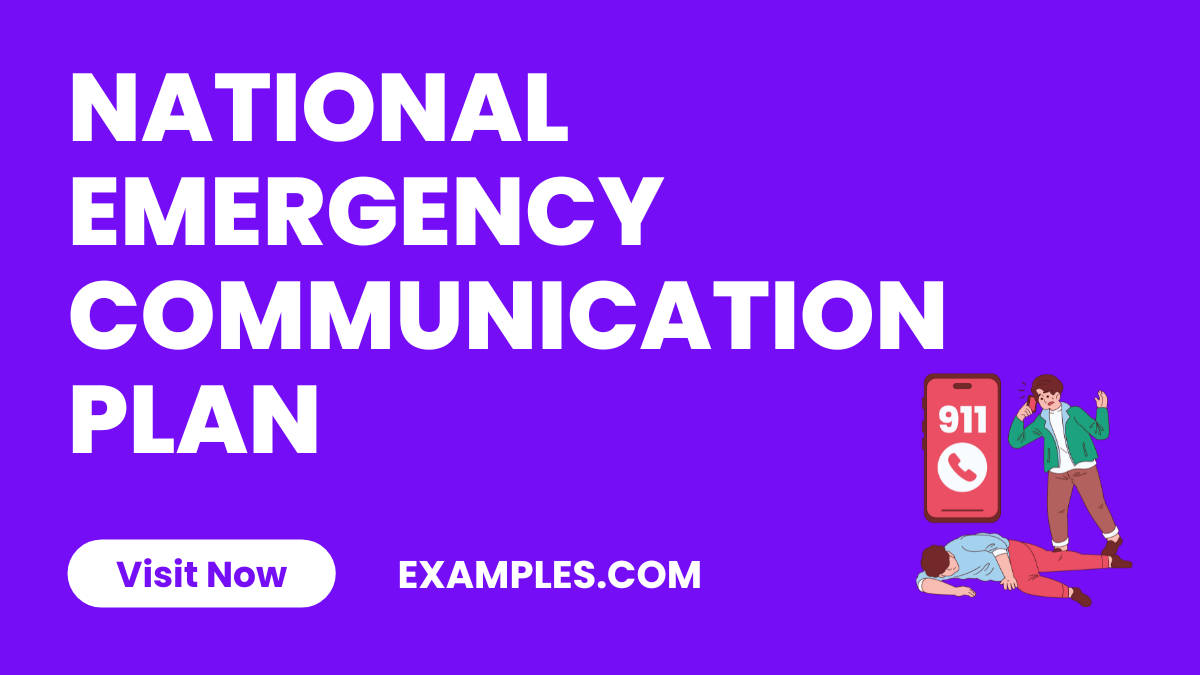5+ National Emergency Communication Plan Examples
Explore the comprehensive National Emergency Communication Plan to understand the intricacies of crisis communication. This detailed resource covers key aspects of communication during emergencies, providing insights and practical examples. Learn how to implement effective communication strategies, engage with stakeholders, and ensure public safety. Discover the power of clear and concise messaging with Communication Examples that illustrate best practices in emergency communication. Whether it’s natural disasters, pandemics, or security threats, this guide equips you with the knowledge and tools to navigate critical situations successfully.
Download National Emergency Communication Plan
National Emergency Communication Plan
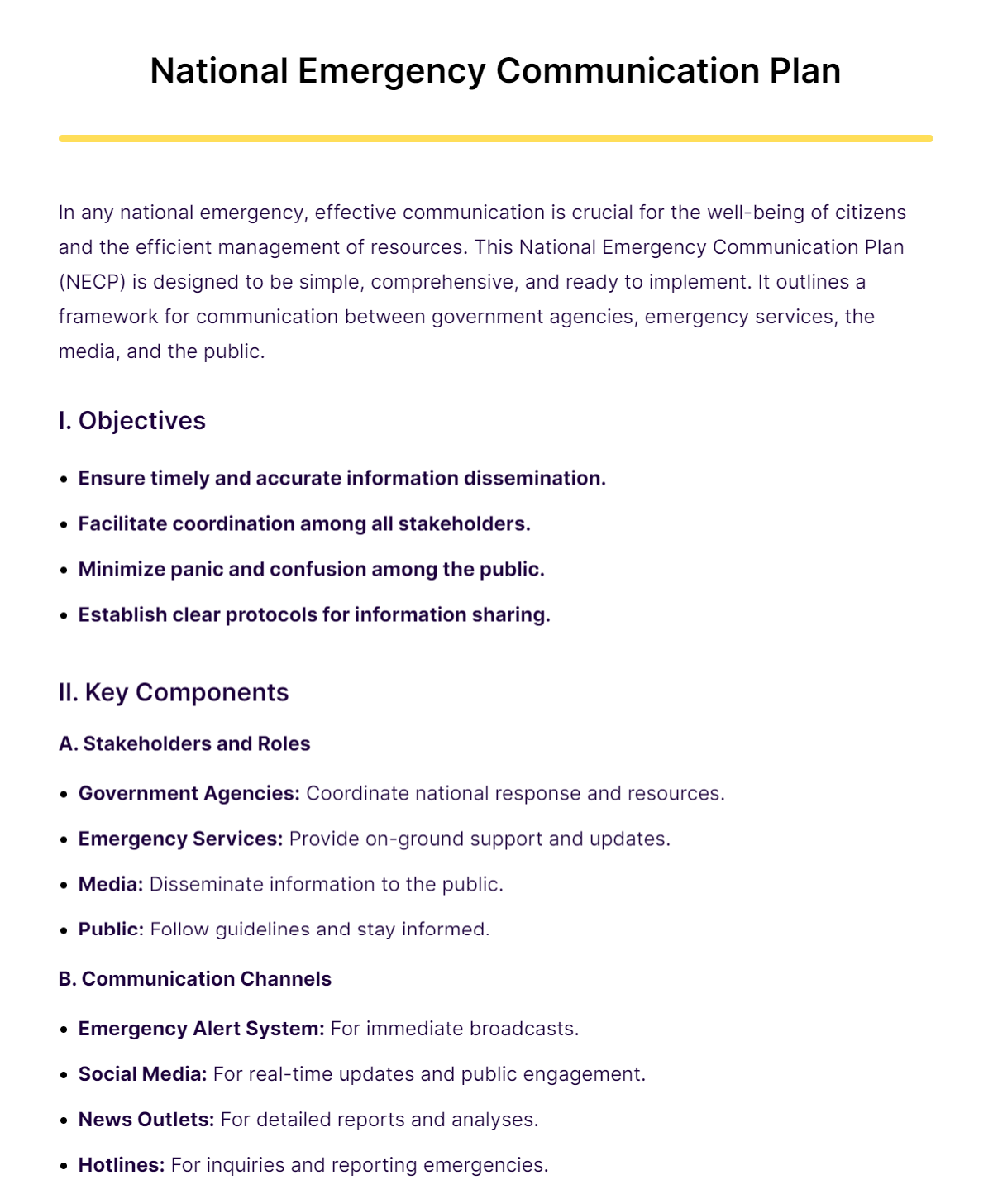
The National Emergency Communication Plan provides a detailed framework for effective communication during national emergencies. It includes objectives like timely information dissemination and coordination among stakeholders, outlines the roles of government agencies, emergency services, media, and the public, and presents protocols for different alert levels and communication channels. It emphasizes the importance of regular training, drills, and updates for a robust communication management plan system.
National Emergency Telecommunication Plan
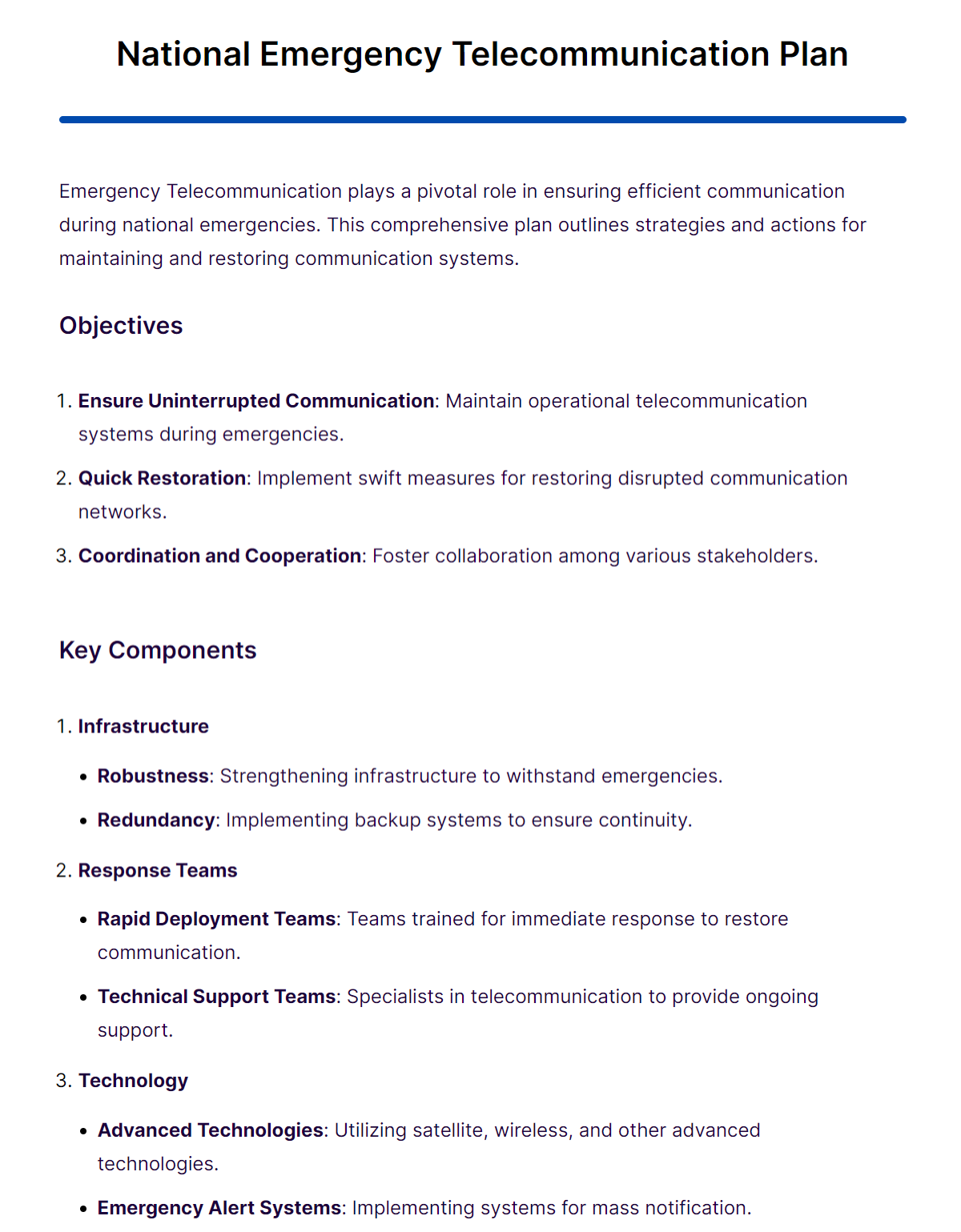
The National Emergency Telecommunication Plan outlines a detailed strategy for maintaining efficient communication during national emergencies. It covers objectives like uninterrupted communication and quick restoration, key components including robust infrastructure and response teams, and phases of implementation from assessment to public awareness. The plan emphasizes the importance of technology, training, and stakeholder coordination for a resilient communication framework.
Crisis Communication Plan for National Emergency
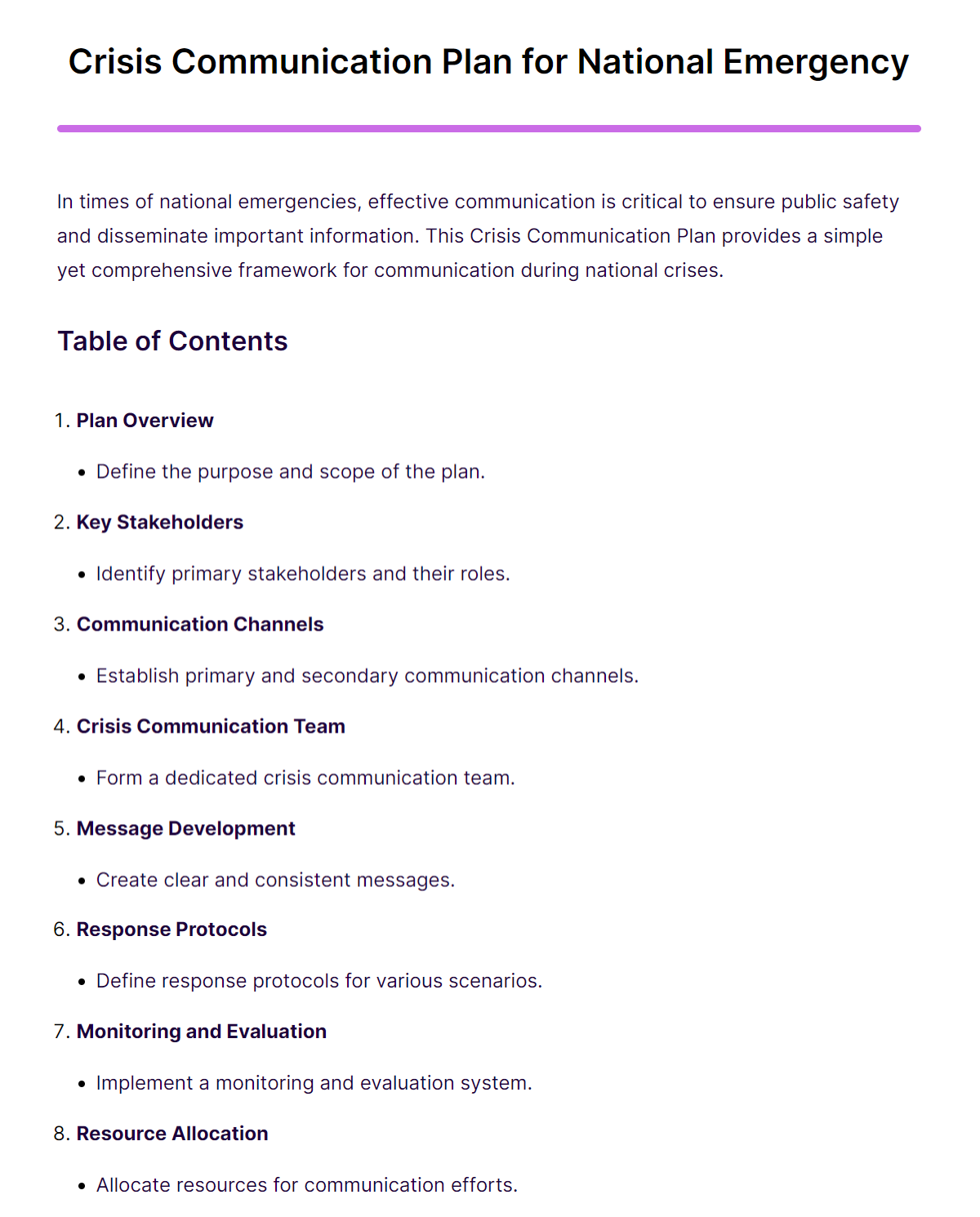
The Crisis Communication Plan for National Emergency is a comprehensive guide designed for effective communication during critical situations. It outlines structured protocols, including identifying key stakeholders, establishing communication channels, forming crisis teams, and developing messages. The plan emphasizes training, public engagement, and regular evaluations to ensure public safety and trust during national emergencies.
National Emergency Risk Communications Plan
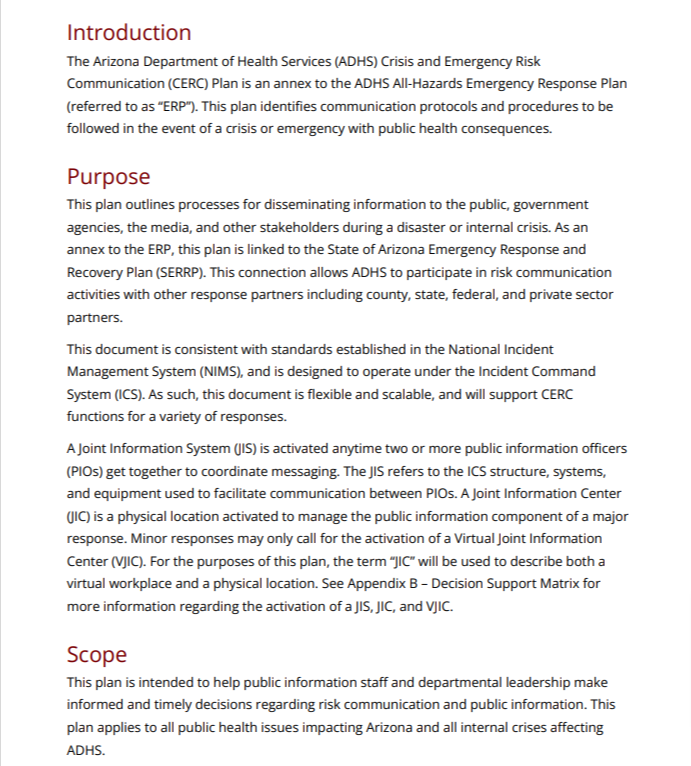
azdhs.gov
DownloadGuidelines for National Emergency Telecommunication Plan
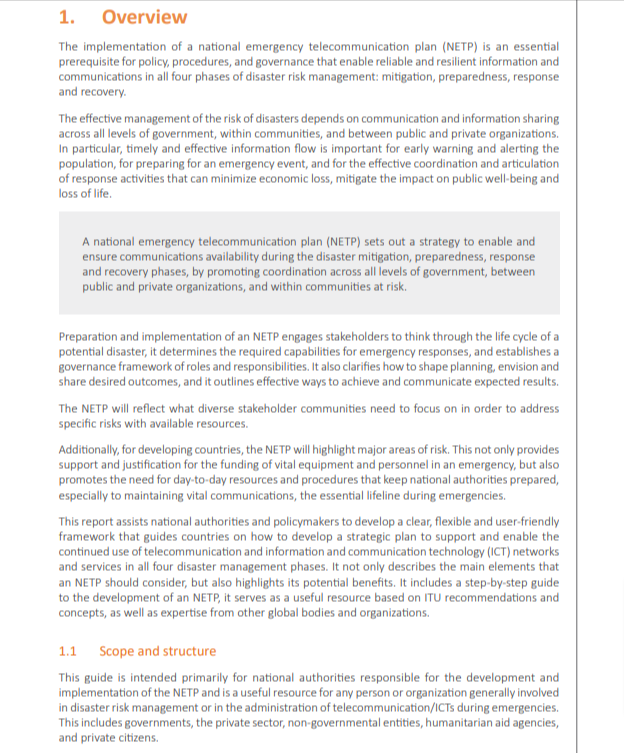
digitalregulation.org
DownloadGoals of National Emergency Communications Plan
- Ensure Public Safety: The primary goal is to ensure the safety and well-being of the public during national emergencies by providing timely and accurate information.
- Effective Information Dissemination: To facilitate the rapid and efficient dissemination of critical information to the public, emergency responders, and relevant stakeholders.
- Coordination and Collaboration: Foster coordination and collaboration among government agencies, non-governmental organizations, and private sector entities involved in emergency response and communication.
- Maintain Public Trust: Build and maintain public trust by providing transparent, reliable, and consistent communication throughout the crisis.
- Reduce Panic and Confusion: Minimize panic and confusion among the public by delivering clear and actionable messages.
- Resource Allocation: Ensure the allocation of resources, both human and technological, to support communication efforts during emergencies.
- Adaptability: Create a plan that is adaptable to various types of national emergencies, including natural disasters, pandemics, and security threats.
- Continuous Improvement: Establish mechanisms for ongoing evaluation and improvement of the communication plan to enhance its effectiveness over time.
- Resilience: Build resilience in the communication infrastructure to withstand the challenges posed by emergencies.
- Public Engagement: Encourage public engagement and participation in emergency preparedness and response efforts.
How to Create National Emergency Communications Plan?
- Define the Purpose and Scope: Determine the primary objectives of the plan, such as public safety, information dissemination, and coordination among agencies.
Specify the scope, whether it covers national, regional, or local emergencies. - Identify Key Stakeholders: Identify and list primary stakeholders, including government agencies, non-governmental organizations, media outlets, and private sector entities.
Define the roles and responsibilities of each stakeholder in the communication plan. - Establish Communication Channels: Identify primary communication channels for information dissemination, such as official websites, social media, press releases, and emergency hotlines.
Establish secondary communication channels for redundancy in case of channel failures. - Form a Crisis Communication Team: Assemble a dedicated crisis communication team with members who have expertise in communication, public relations, and crisis management.
Assign roles and responsibilities within the team, including a spokesperson and communication coordinators. - Message Development: Develop clear and concise messages for different types of national emergencies, ensuring consistency in tone and content.
Create templates for messages that can be adapted to specific situations. - Response Protocols: Define response protocols for various scenarios, including natural disasters, pandemics, security threats, and more.
Specify escalation procedures and decision-making authority within the communication team. - Monitoring and Evaluation: Implement a system to monitor the effectiveness of communication efforts in real-time.
Conduct regular evaluations and reviews to assess the plan’s performance and make necessary adjustments. - Resource Allocation: Allocate resources, both human and technological, to support communication efforts during emergencies.
Establish a budget for crisis communication activities. - Training and Drills: Provide training to communication team members on crisis communication best practices.
Conduct regular drills and simulations to test the plan’s effectiveness and improve team readiness. - Public Engagement: Develop strategies for engaging with the public during emergencies, including providing regular updates, instructions, and reassurance.
Encourage public participation in emergency preparedness efforts.
What are the Functions Described in the National Emergency Communications Plan?
A National Emergency Communications Plan typically outlines various functions to ensure effective communication during emergencies. These functions include:
- Alert and Warning: Issuing timely and accurate alerts and warnings to the public, emergency responders, and relevant agencies to inform them about the emergency situation.
- Notification: Contacting and notifying key individuals, organizations, and agencies involved in emergency response, including activating the crisis communication team.
- Activation of Communication Resources: Activating and managing communication resources such as emergency hotlines, public address systems, and communication centers to support information dissemination.
- Information Collection: Collecting data and information related to the emergency, including situational updates and incident reports.
- Information Verification: Verifying the accuracy and credibility of information before dissemination to ensure that the public receives reliable information.
- Information Dissemination: Distributing information and updates to the public, emergency responders, and stakeholders through various communication channels such as websites, social media, press releases, and mobile apps.
- Public Information: Crafting clear and concise messages for the public to keep them informed, provide safety instructions, and address common questions and concerns.
- Media Relations: Managing interactions with the media, including providing press briefings, responding to media inquiries, and ensuring responsible and accurate reporting.
- Stakeholder Engagement: Engaging with government agencies, non-governmental organizations, private sector entities, and community groups to coordinate efforts and share critical information.
- Resource Coordination: Coordinating the allocation of resources, including personnel, technology, and equipment, to support communication efforts during emergencies
How to Implement National Emergency Communications Plan?
Implementing a National Emergency Communications Plan is crucial for ensuring public safety during crises. It involves forming a dedicated team, training members, and allocating resources. Regular drills and simulations test the plan’s readiness. Communication channels, including websites and social media, must be established. Clear and consistent message templates should be created for various emergencies. Monitoring systems and evaluation processes help assess performance. Engaging with the public through informative updates and public forums builds trust. Compliance with legal regulations and interoperable communication systems are essential.
- Training Team Members: Conducting regular training sessions to ensure the team is well-prepared for crisis communication.
- Resource Allocation: Allocating funds and technology to support communication efforts during national emergencies.
- Multilingual Communication: Providing information in multiple languages to reach a diverse population.
- Interoperable Systems: Ensuring that communication systems can work together seamlessly.
- Public Awareness Campaigns: Educating the public about the plan and their role in emergency communication.
- Activation Protocols: Defining clear procedures for activating the plan during different emergency scenarios.
- Accessible Communication: Addressing the needs of individuals with disabilities in communication efforts.
- Monitoring Effectiveness: Implementing systems to monitor real-time communication efforts for improvement.
- Stakeholder Coordination: Collaborating with government agencies, NGOs, and private sectors for effective communication.
- Adaptable Plan: Being prepared to adapt the plan to various types of national emergencies, including natural disasters and security threats.
The Steps to Create an Emergency Communication Plan on Rogue Credit Union’s website offers a structured approach to preparing for emergencies. It emphasizes the importance of gathering contact information for all household members and key services, creating tailored emergency plans for different locations like schools and workplaces, and ensuring that these plans are shared and known to all family members. Regular updates and reviews of the plan are recommended for effectiveness. This comprehensive guide is a valuable resource for families seeking to enhance their preparedness for unforeseen events.



